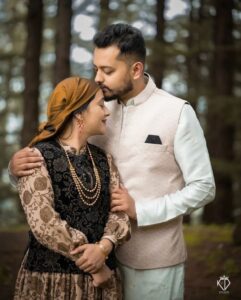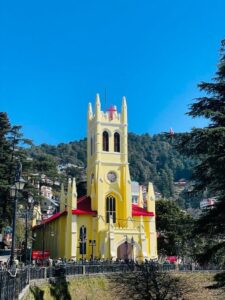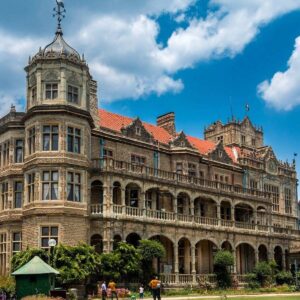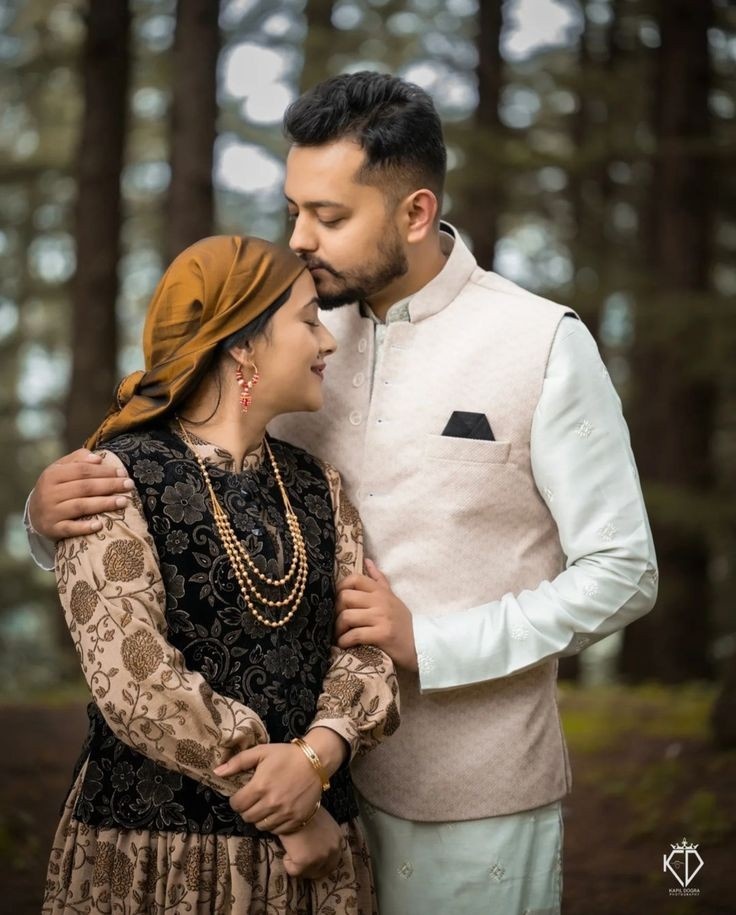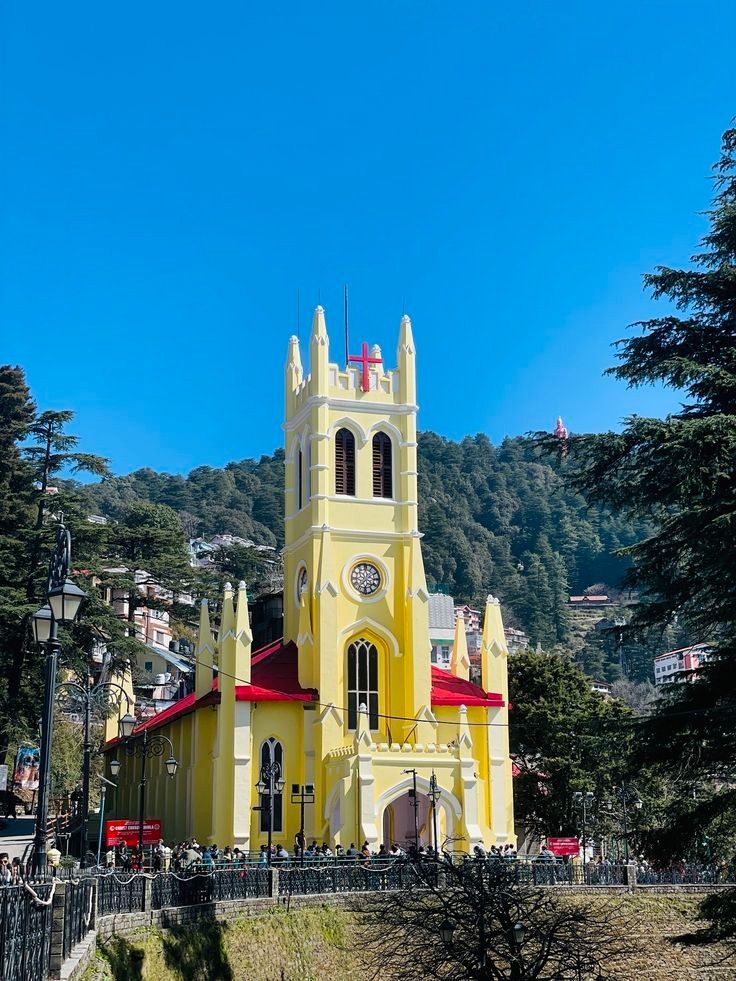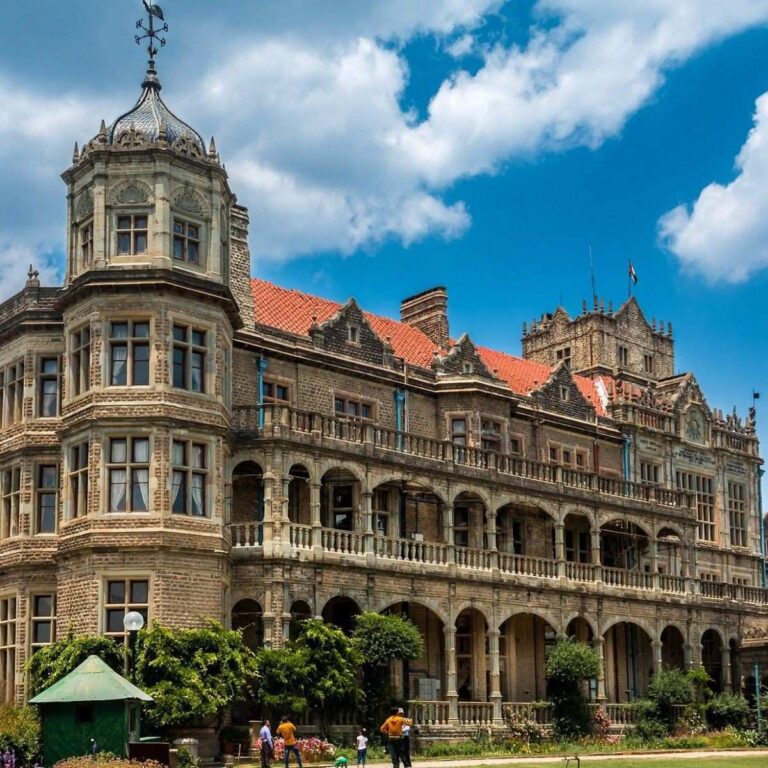Introduction: Where Threads Weave the Story of the Hills
In the serene folds of the Himalayas lies Himachal Pradesh, a land where snow-capped peaks meet lush valleys, and traditions breathe through every color and fabric. The people of Himachal have always shared an intimate bond with nature—reflected beautifully in their clothing. The traditional dress of Himachal Pradesh isn’t just attire; it’s a language of identity, culture, and resilience.
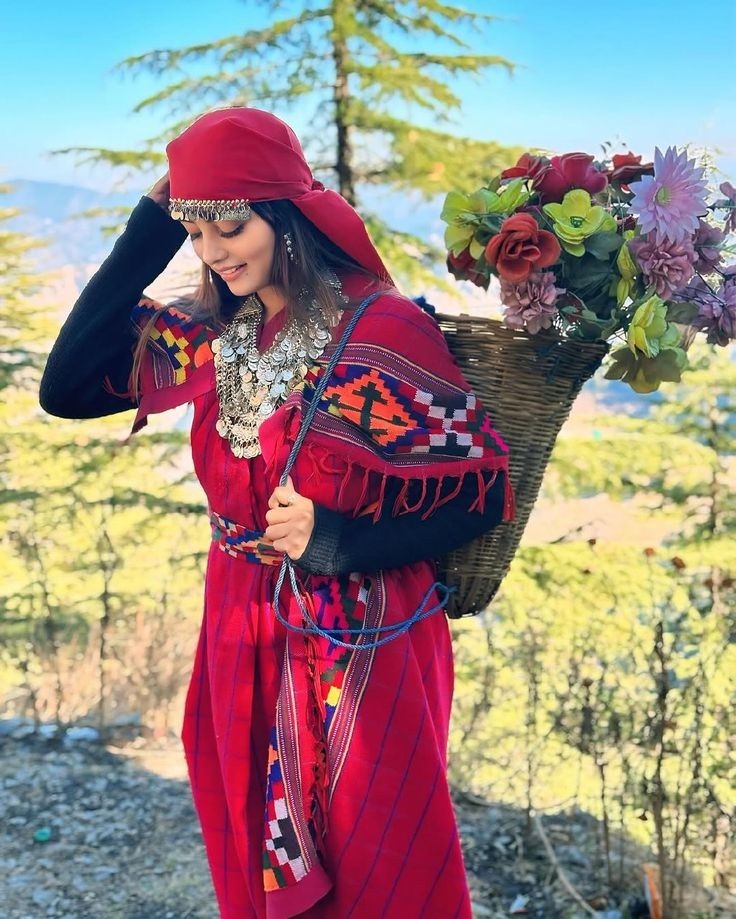
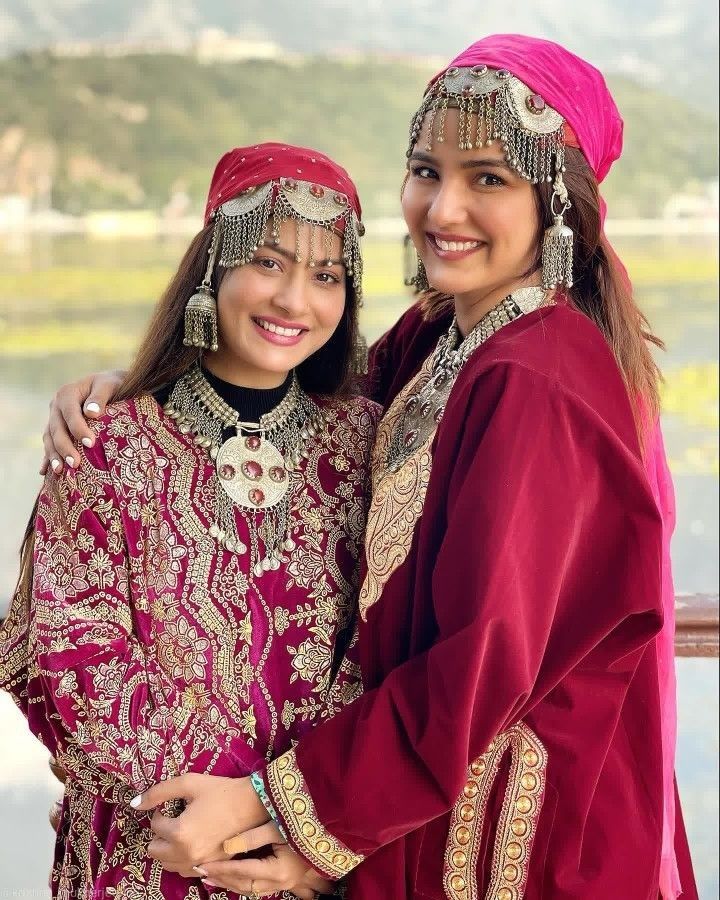
Each district—whether it’s Kullu, Kinnaur, Chamba, or Lahaul-Spiti—has developed its own distinctive style of dressing, influenced by climate, geography, and centuries-old customs. These garments are practical yet aesthetic, designed to combat the cold while showcasing the artistic genius of local weavers and artisans.
From the elegant Pattu of Kullu women to the richly bordered Dohru of Kinnaur, the traditional costumes of Himachal celebrate color, craftsmanship, and community pride. Even today, amid modernity and tourism, Himachalis proudly preserve their sartorial heritage—wearing their culture quite literally on their sleeves.
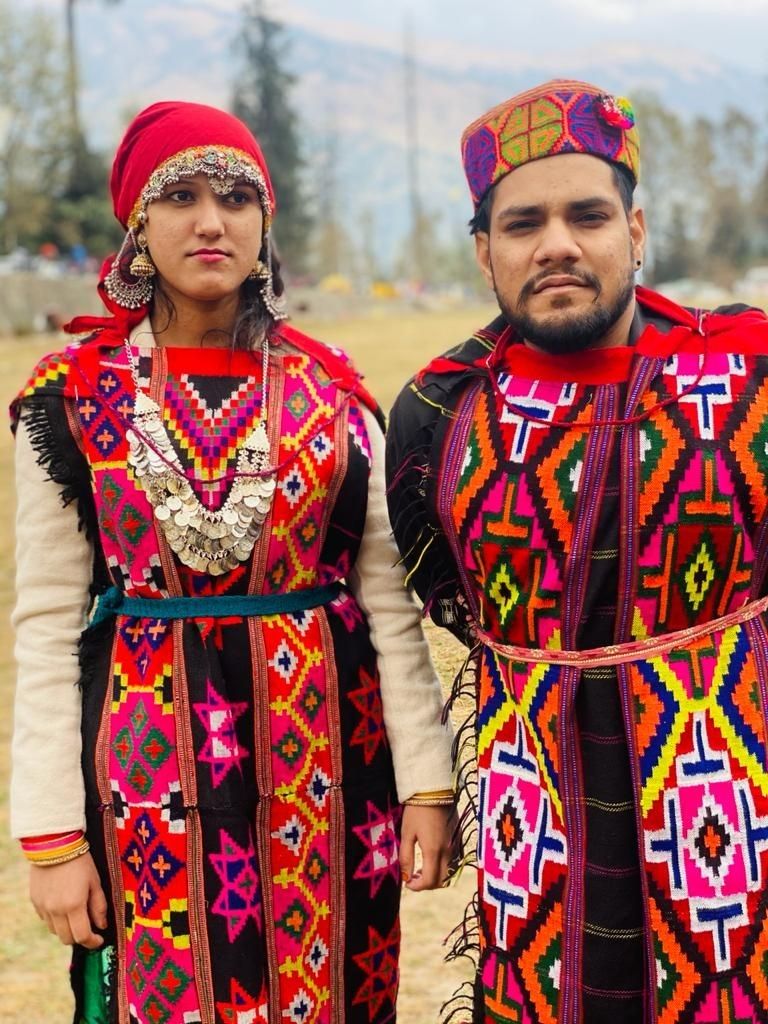
This blog explores the deep cultural roots, regional variations, and contemporary revival of Himachali attire, offering a panoramic view of how these clothes continue to embody the soul of the Himalayas.
Historical & Cultural Significance of Himachali Attire
Himachal Pradesh’s history is woven with stories of migration, spirituality, and adaptation to its mountainous terrain. The earliest settlers relied heavily on wool, derived from local sheep and goats, as protection against harsh winters. Over centuries, this functional necessity evolved into a form of creative expression.
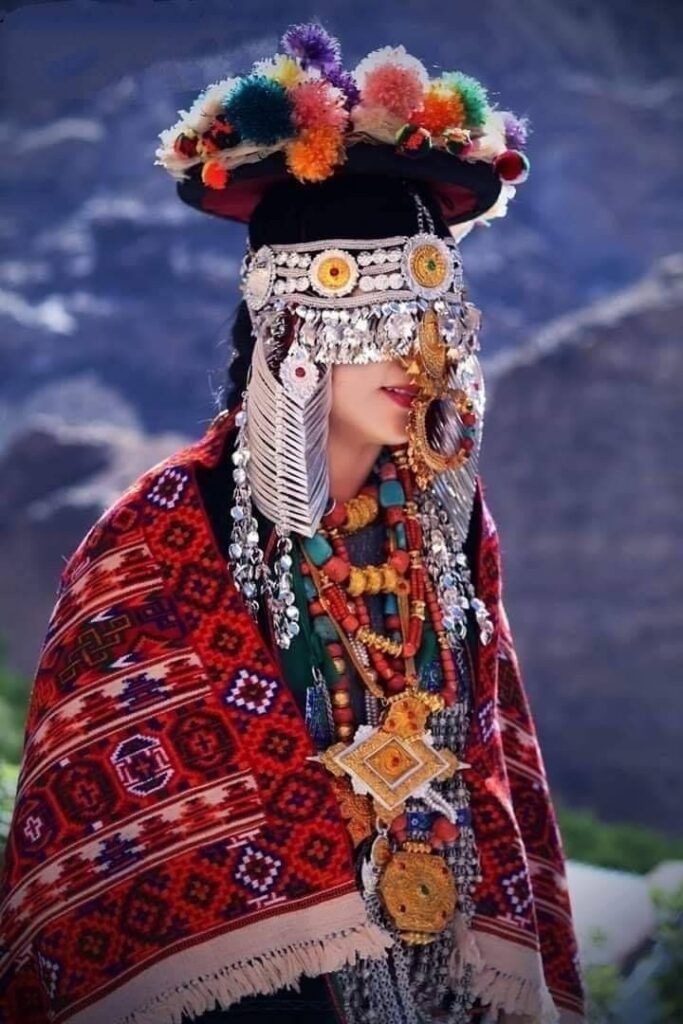
Traditional attire was not only about comfort—it was symbolic. A person’s dress signified their region, marital status, and sometimes even caste or occupation. For instance, in ancient times, unmarried Kinnauri women wore certain jewelry styles distinct from married ones.
The state’s attire also reflects its spiritual duality—influenced by both Hindu and Buddhist traditions. Vibrant reds, maroons, and greens symbolize fertility, prosperity, and auspiciousness, while patterns often depict natural and spiritual motifs like mountains, flowers, or religious symbols.
Festivals and fairs such as Kullu Dussehra, Minjar Mela (Chamba), and Renuka Fair (Sirmaur) are not only cultural gatherings but fashion exhibitions where locals wear their finest clothes. Here, attire becomes a public expression of joy and cultural continuity.
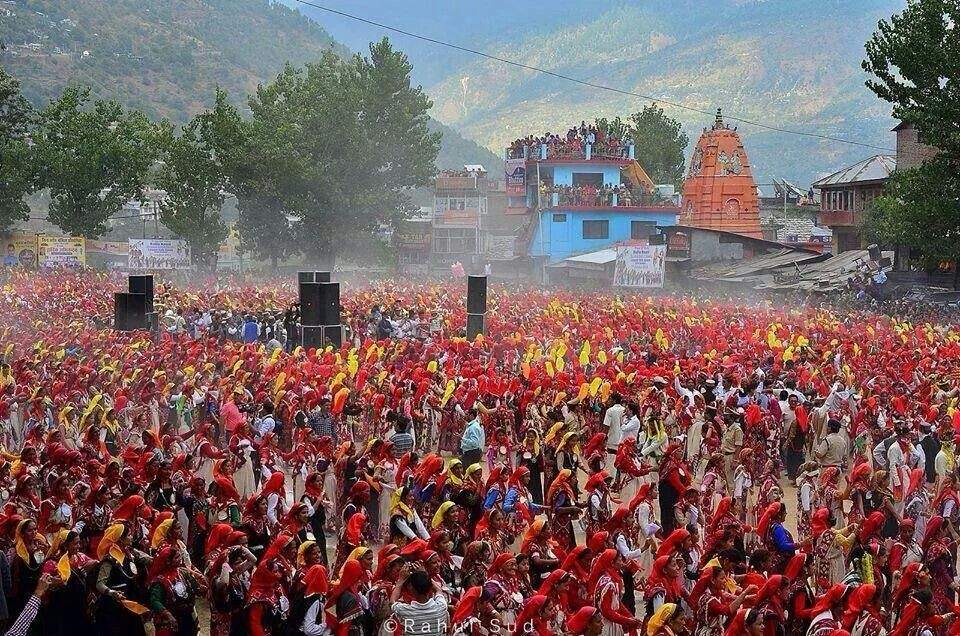
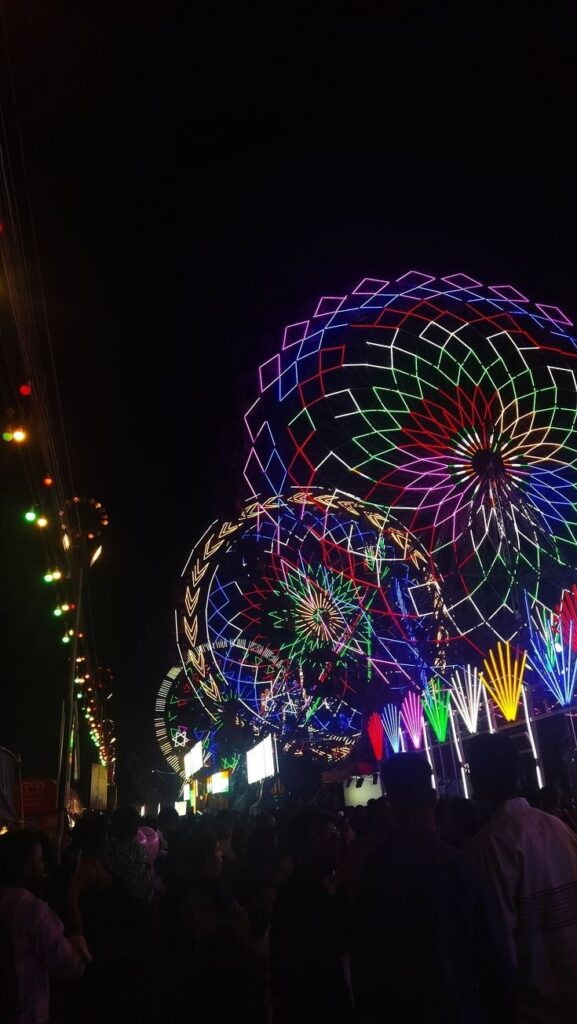
The Chamba Rumal, an embroidered handkerchief once gifted during weddings and royal ceremonies, remains an artistic heritage that defines the elegance of Himachali textile art.
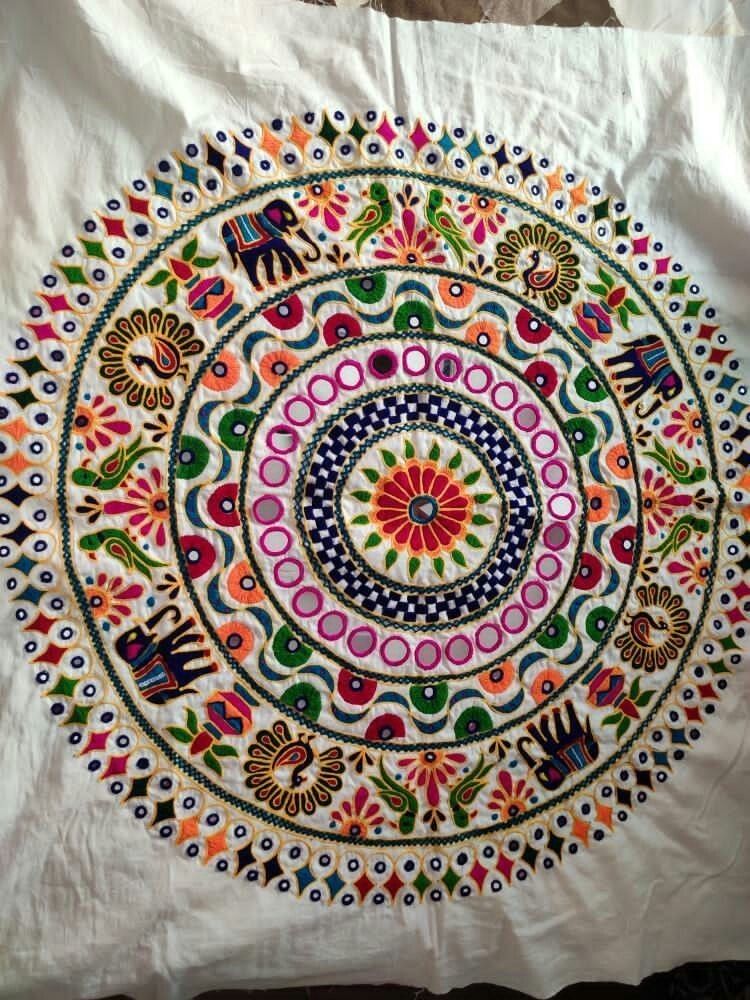
Thus, traditional Himachali clothing serves a triple purpose—utility, beauty, and symbolism—making it a living record of the people’s journey through time.
Regional Variations Across Himachal Pradesh
One of the most fascinating aspects of Himachali culture is its regional diversity. Every valley has its own distinctive attire shaped by geography, lifestyle, and inter-regional influences.
Kullu and Kinnaur: The Heart of Woollen Heritage

The Kullu Valley, known for its snow, orchards, and vibrant festivals, is equally famous for its textiles. Women wear the Pattu, a hand-woven woollen wrap worn much like a saree but pinned at the shoulders with ornate silver clasps called Brok. Beneath it, a blouse and skirt or salwar are worn. The look is completed with a colorful Thipu (woollen headscarf) and Pullan (grass or woollen shoes).
Men of Kullu wear Cholas (long woollen coats) and Suthan (tight trousers). A broad belt made of wool or leather is often used to secure the coat. The Kullu Topi—a cap with a colorful geometric border—has become an iconic symbol of Himachali identity.
In Kinnaur, clothing reflects Tibetan and Himalayan artistry. Women wear a Dohru, a long rectangular woollen cloth, wrapped intricately to form layered pleats. Over it, they drape a richly bordered shawl called Chhanli. Their silver jewelry is among the most stunning in the region—Chandanhaar (necklace), Dejhor (pendant), and Bali (earrings) all signify cultural pride.
The Kinnauri topi with its signature green velvet band represents the lushness of the hills. In weddings or festivals, you’ll see men and women donning the brightest attire—reds, greens, and yellows—against the snowy backdrop, creating a visual symphony of color and tradition.
Chamba and Kangra: The Valleys of Art and Grace
The Chamba region is a cultural jewel of Himachal, renowned for the Chamba Rumal, an embroidered cloth that once adorned royal weddings. The embroidery, using double-satin stitches, often depicts mythological scenes from the Mahabharata and Ramayana.
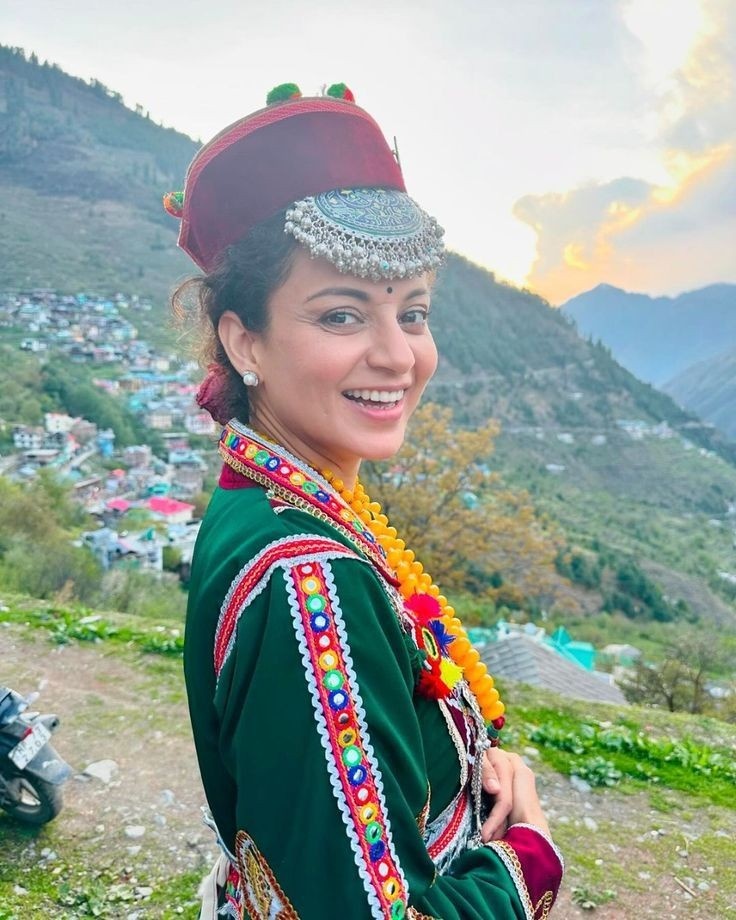
Women of Chamba traditionally wear Ghagri (a flared skirt) paired with Choli (blouse) and Rumal (head covering). The combination of deep reds and blues reflects the regal aesthetic of the old Chamba kingdom. Men wear long Cholas and Sadri (waistcoats), often paired with woollen turbans.
In Kangra, attire reflects the influence of both plains and hills. The Salwar-Kameez with a woollen shawl is common among women, while men favor Kurta-Pajama with woollen waistcoats. During winters, thick shawls with floral embroidery protect them from the cold. Kangra women are also known for their heavy jewelry—Nath (nose ring) and Chudiyan (bangles)—which are integral to their bridal attire.
Lahaul and Spiti: Where Cold Meets Culture
The trans-Himalayan regions of Lahaul and Spiti experience freezing temperatures for most of the year. Here, attire is designed first for survival and then for beauty.
Both men and women wear Gonchas—long, thick robes tied with a sash at the waist. These robes are often lined with fur or yak wool for insulation. Underneath, multiple layers of clothing are worn to preserve body heat.
Women accessorize with turquoise and coral jewelry, inspired by Tibetan aesthetics, as these stones are believed to bring spiritual strength and good fortune. Headgear often includes woollen caps or scarves, and footwear is made of thick leather or woven yak hair.
The overall look is simple yet striking, reflecting the harsh but magnificent terrain of the high Himalayas.
Shimla and Sirmaur: Blending Heritage and Colonial Charm
Shimla, the former summer capital of British India, experienced a cultural fusion of local Himachali and European influences. Women here wear Ghagri-Choli or Salwar-Kameez with beautiful embroidered shawls, while men prefer Coats, Cholas, and Himachali Topis.
The Shimla Topi, often in grey with a maroon band, remains a popular token of Himachali pride. You’ll often spot it at official events, symbolizing respect and unity.
In Sirmaur, women’s traditional attire includes Ghagri, Choli, and a head covering called Dhatu. They adorn themselves with silver ornaments, especially during fairs like Bisu and Sair. Men wear Kurta-Chola paired with Suthan, and carry a woollen shawl draped over their shoulder—a mark of elegance and tradition.
Mandi and Bilaspur: The Central Hills’ Cultural Canvas
The people of Mandi and Bilaspur regions have preserved their distinct identities through their attire. Mandi women wear Pattus with striking borders and use Phentus (colorful scarves) to cover their heads. Heavy silver ornaments—necklaces, anklets, and bangles—are part of daily wear as well as festive dressing.
Men in Mandi wear Cholas or Sadri with woollen Suthans, while Bilaspur’s style reflects both Punjabi and Himachali influence. During festive occasions, women wear bright Dupattas embroidered with golden thread, and men don embroidered waistcoats and caps showcasing regional motifs.
Himachali Women’s Traditional Dresses: A Symphony of Color and Culture
Himachali women’s attire is among the most diverse and artistic in India. Each district offers a unique variation, yet certain elements remain universal—warmth, color, and elegance.
The Pattu is perhaps the most iconic garment, particularly in Kullu and Mandi. Woven on traditional looms from sheep wool, it’s both practical and ornamental. A Brok—a silver clasp—secures it on the shoulders, and a colorful waistband, Gachi, accentuates the waist.
In Kinnaur, the Dohru is a symbol of grace. It’s typically dark wool with a bright embroidered border. Women wear it during ceremonies and festivals, pairing it with silver jewelry. The Dhatu (headscarf) is a sign of respect and modesty, often passed down generations.
Chamba’s women favor the Ghagri-Choli, while Kangra women love floral prints. Across regions, Himachali women complete their look with jewelry, shawls, and embroidered shoes. Every piece reflects care, creativity, and cultural continuity.
Himachali Men’s Traditional Dresses: Simplicity with Pride
Men’s traditional wear emphasizes comfort and dignity. The Chola, a knee-length woollen coat, is standard across regions. In winters, it’s paired with a woollen shawl or Angora muffler.
Men from Kullu, Mandi, and Kinnaur proudly wear regional variants of the Himachali Topi. Its colors hold meaning:
- Green band (Kinnauri cap) – prosperity and peace
- Multicolored (Kullu cap) – unity and diversity
- Maroon (Bushehri cap) – power and pride
The Suthan, similar to churidar trousers, is common, while Pullan (traditional footwear) made from sheep wool and grass keeps the feet warm. During festivals, men adorn silver chains or carry woollen shawls as symbols of pride.
Handloom Heritage & Craftsmanship: The Artistry of the Hills
The heart of Himachali culture lies in its handloom weaving traditions, passed down through generations. The Kullu Shawl, recognized with a Geographical Indication (GI) tag, is a global emblem of Himalayan craftsmanship.
Each shawl is a masterpiece—woven on pit looms with geometric patterns in red, green, and white. These motifs often carry deep symbolism: triangles for mountains, diamonds for fertility, and zigzags for rivers.
In Kinnaur, weaving takes on a sacred dimension. The Kinnauri Pattis (borders) are intricately woven in silk and wool, each design unique to a family or village. Similarly, Chamba and Mandi artisans produce delicate embroidery and fabric painting, often depicting folklore and deities.
The Himachal Pradesh government has established weaver cooperatives and training centers to promote sustainable livelihoods. Organizations like the Himachal Pradesh State Handicrafts and Handloom Corporation ensure fair wages and preserve traditional techniques in the face of modernization.
Jewelry, Footwear, and Accessories: The Finishing Touches
Jewelry in Himachal Pradesh is as significant as the attire itself. Crafted mainly in silver, the ornaments are heavy, intricate, and rich in symbolism.
- Chandanhaar: Multi-layered silver necklace worn by women of Kinnaur.
- Dejhor: Hanging pendants symbolizing marital status.
- Tung and Bali: Silver earrings shaped in regional motifs.
- Nath: Oversized nose ring, particularly in Chamba and Kangra.
Men too wear jewelry—simple silver chains or rings—during festivals.
Footwear traditionally consists of Pullan—woven grass shoes—or Peshawari juttis in the lower regions. Today, modern leather versions maintain the classic design.
Accessories like shawls, caps, and scarves hold emotional value. Many are gifted during weddings or festivals as tokens of respect and affection.
Influence of Modernization & Tourism
With the growth of tourism and media, Himachali attire has found new life. Designers and cultural entrepreneurs have reinterpreted traditional motifs into modern fashion. The Kullu Shawl, once a winter staple, now graces fashion ramps in Delhi and Mumbai.
Local brands and women’s self-help groups are producing handwoven scarves, bags, and stoles using traditional patterns for global markets. Events like Kullu Dussehra and Himachal Day showcase these crafts, attracting tourists who buy them as cultural souvenirs.
Urban Himachalis proudly integrate traditional elements into daily wear—pairing a Kullu stole with formal outfits or donning the Himachali topi during celebrations. This fusion of modern and traditional keeps the heritage alive in a changing world.
Sustainable Textiles & Future of Himachali Handlooms
Himachal’s artisans are increasingly adopting sustainable practices. Many weavers now use organic dyes, hand-spun wool, and eco-friendly looms. Initiatives like Cluster Development Programs by the government and NGOs are training young artisans in modern design while keeping heritage techniques intact.
The rise of eco-tourism and demand for ethical fashion offers hope for Himachali weavers. Fashion schools in India are collaborating with local artisans to create hybrid designs that appeal to global markets.
The challenge lies in balancing modernization with authenticity. If done thoughtfully, Himachal’s handlooms could become a model for sustainable rural enterprise—where every product carries the warmth of the mountains and the ethics of the earth.
Conclusion: The Fabric of Identity
The traditional dress of Himachal Pradesh is not merely a reflection of beauty—it’s a living archive of history, geography, and identity. From the simple yet elegant Pattu to the intricate Chamba Rumal, every weave carries the soul of the region.
In an age of fast fashion, Himachal’s slow, deliberate craftsmanship reminds us that clothing can be more than utility—it can be memory, art, and legacy.
Whether in the high passes of Spiti or the valleys of Kullu, Himachalis continue to wear their heritage with pride. Their attire tells a story that began centuries ago and still unfolds, one thread at a time.

